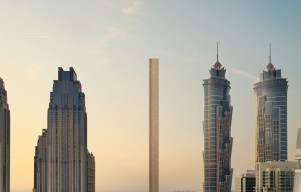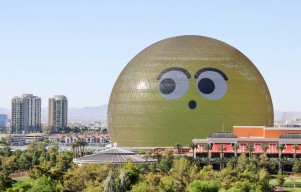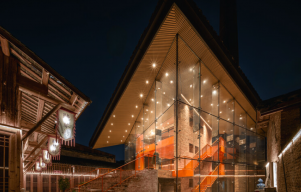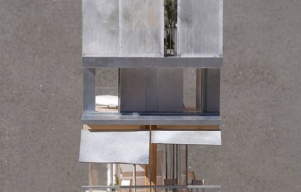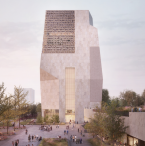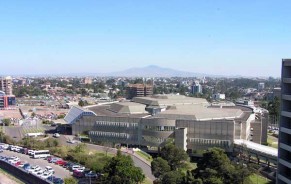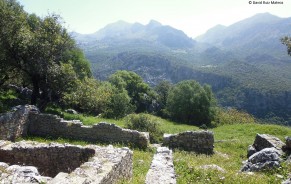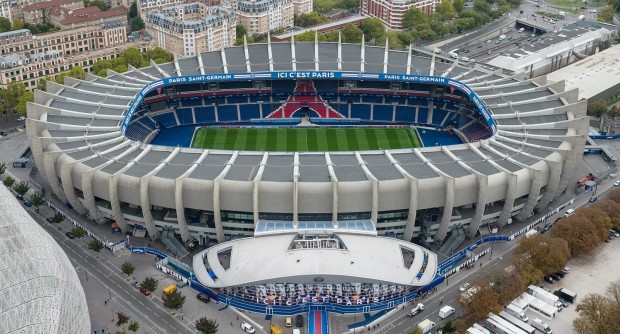
(Photo: Wikipedia / Arne Mueseler)
With the countdown to the XXXIII Olympic Games in Paris well underway, the world eagerly anticipates a spectacle of athleticism and urban revitalization. Paris 2024, in a departure from conventional stadium-centric hosting, heralds a fresh approach to the Olympic experience. It sees sports architecture as a functional infrastructure and a platform for collective engagement and celebration. As the city gears up for this global event, a spotlight shines on diverse sports architecture projects worldwide, each contributing to the rich tapestry of athletic and communal experiences.
Lusail FIFA Stadium

(Photo: Foster + Partners / Nigel Young )
The Lusail FIFA Stadium in Qatar, designed by Foster + Partners, is an iconic symbol of traditional sports architecture. A meticulous understanding of the client's needs and reverence for Qatar's climatic and cultural heritage birthed a design that transcends mere functionality. Its gold skin, decorated with triangular windows, is brilliant in the sun and could be a thermo-shield. Those triangular windows block the sun's shine, produce shade, and provide ventilation. Being the first 5-star rated system of the Global Sustainability Assessment System, the stadium is a valuable role model in constructing environment-friendly sports infrastructure.
National Institute of Water Sports

(Photo: M:OFA Studios / Vinay Panjwani)
In India, the National Institute of Water Sports by M: OFA Studios challenges the pragmatic norms of government institutions. Breaking away from conventional expressions, the institute makes a bold statement with its iconic design while retaining a sense of local identity through vernacular elements. This fusion of global aesthetics with local context epitomizes a modern approach to architectural expression.
Also Read: Cox Architecture Leads Design of $715 Million Macquarie Point Stadium in Hobart
Asian Games Cricket Field

(Photo: AZUT / Qingshan Wu)
Across the seas in Hangzhou, China, the Asian Games Cricket Field by AZUT seamlessly integrates sports infrastructure with the natural landscape. Nestled at the foot of the Ziwu Tide Mountain, the venue harmonizes with its surroundings, creating a serene environment for athletes and spectators alike. Its thoughtful placement and design reflect a holistic understanding of the site's ecological and cultural significance.
Ordos Smart Sports Park

(Photo: Holi Landscape Photography / PLAT ASIA)
Meanwhile, PLAT ASIA transforms an urban square into a Smart Sports Park in Ordos City, China, promoting community wellness and interaction. Adaptive reuse is not just for revitalizing a magnificent space but also for meeting the growing need for recreational space in urban areas. Sustainable technology and smart design, the main elements of the park's construction, make it an influential example. Other developments, accordingly, will raise the livability of the urban area first.
University of Idaho Central Credit Union Arena

(Photo: Opsis Architecture / Lara Swimmer)
Across the courtyard from home, the University of Idaho Credit Union Central Arena (CCUCA) by Opsis Architecture is a community embodiment and an athletic excellence incarnation. The extensively equipped auditorium's profile is designed to symbolize the planetary history of the Palouse region, where cataclysm was the main driver. Alongside its role as a sports area, it has become a recreation center featuring various events staged in order by students, lecturers, and the surrounding community.
Being below the World Cup Paris 2024 surface, these diverse sports architecture projects deliver some aspects that will usher in the changing maiden of athletic infrastructures and urban designs. It teaches the sports fans the fact that stadiums are not just court for touch, instead they are a place for attachment, jubilation as well as joyful collectivity. By reinforcing their bases in technology and cultural makeover, these projects blaze the trail for the emergence of sports buildings where any structure makes history, and every event leaves a memorable stamp on the community.
Related Article: Kaohsiung Port Terminal By RUR Architecture Transforms Taiwan's Coastal Landscape

